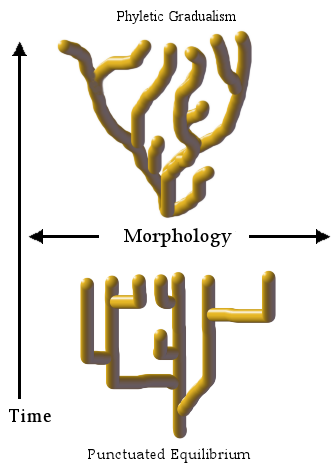Last week I gave you a task: to identify this snail and tell me why it’s important. The task was made easier because I gave you a complete and straightforward photo. As I expected with such a savvy audience, you all got in the ballpark pretty darn quickly.
This is Cerion agassizi, a species of Bahamian land snail. Why do we care? Because Bahamian land snails were, for decades, the subject of Steve Gould’s research, and this particular one was collected by Gould himself. (As a side note, a lot of paleontology takes place in inhospitable places—barren for sure, and either freezing or scorching. You have to respect a man for figuring out how to get paid for collecting fossils and researching evolution while strolling along Caribbean beaches.)
Gould began studying land snails for his doctoral research at Columbia University in the 1960s. His careful documentation of their structure over space and time helped to form the basis of the punctuated equilibrium model, which he developed with colleague Niles Eldredge in 1972. The model suggested that evolution happens in leaps of change separated by long stretches of very little change, which they called stasis. Continued research into land snails generated support for the model. Gould noted, for example, that there was very little structural change among fossils of C. agassizi populations on three Bahamian islands throughout their 120,000-year record. This, he contended in a 1988 paper, was evidence for stasis.
 Gould (whose assistant I was for a while) helped evolutionary biologists to look differently at periods of stasis in the fossil record. He wrote, “Stability must not be viewed as the simple absence of evolution (and, therefore, as ‘no data,’), but as a positive subject within evolutionary theory demanding documentation and explanation in its own right.” After carefully and thoroughly laying out the evidence for regional stasis in C. agassizi, Gould concluded his paper with, “We are trained to study change, and we delight in its manifestations. But if we ever understood the sources of stability, we might achieve our finest insight into the causes of evolution.”
Gould (whose assistant I was for a while) helped evolutionary biologists to look differently at periods of stasis in the fossil record. He wrote, “Stability must not be viewed as the simple absence of evolution (and, therefore, as ‘no data,’), but as a positive subject within evolutionary theory demanding documentation and explanation in its own right.” After carefully and thoroughly laying out the evidence for regional stasis in C. agassizi, Gould concluded his paper with, “We are trained to study change, and we delight in its manifestations. But if we ever understood the sources of stability, we might achieve our finest insight into the causes of evolution.”
Congratulations to Dan Coleman, our winner this week for getting the species right!
Are you a teacher and want to tell us about an amazing free resource? Do you have an idea for a Misconception Monday or other type of post? Have a fossil to share? See some good or bad examples of science communication lately? Drop me an email or shoot me a tweet @keeps3.

